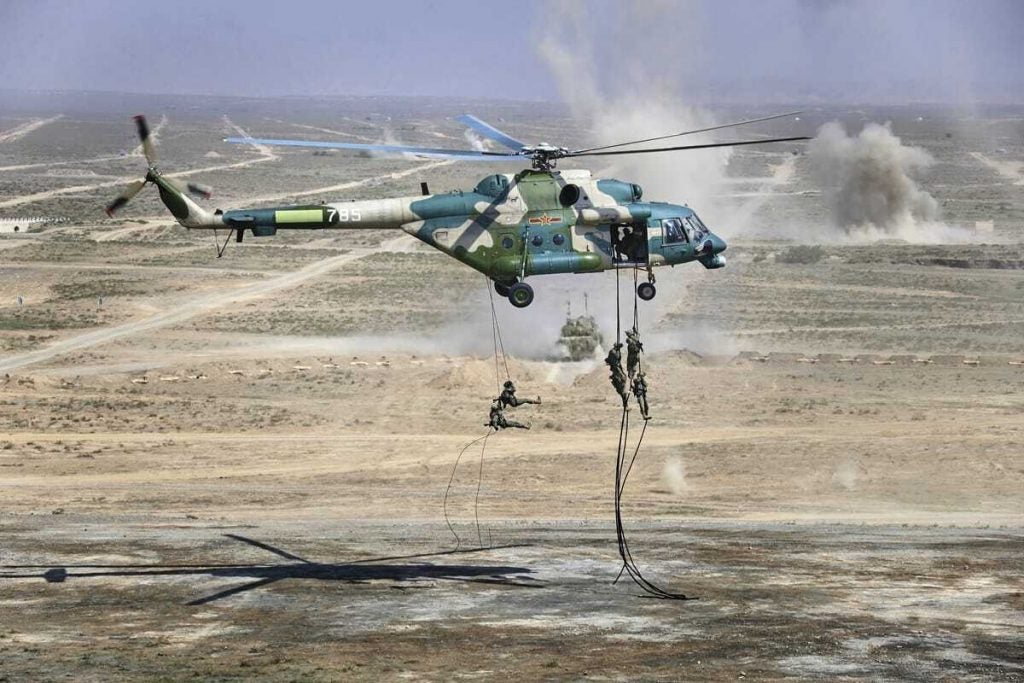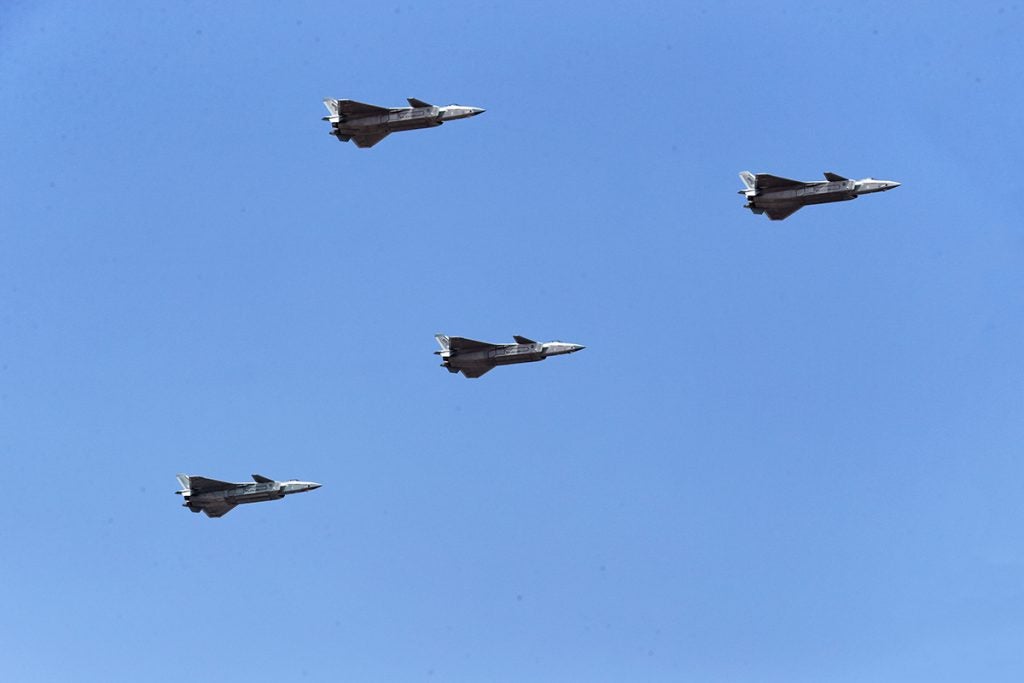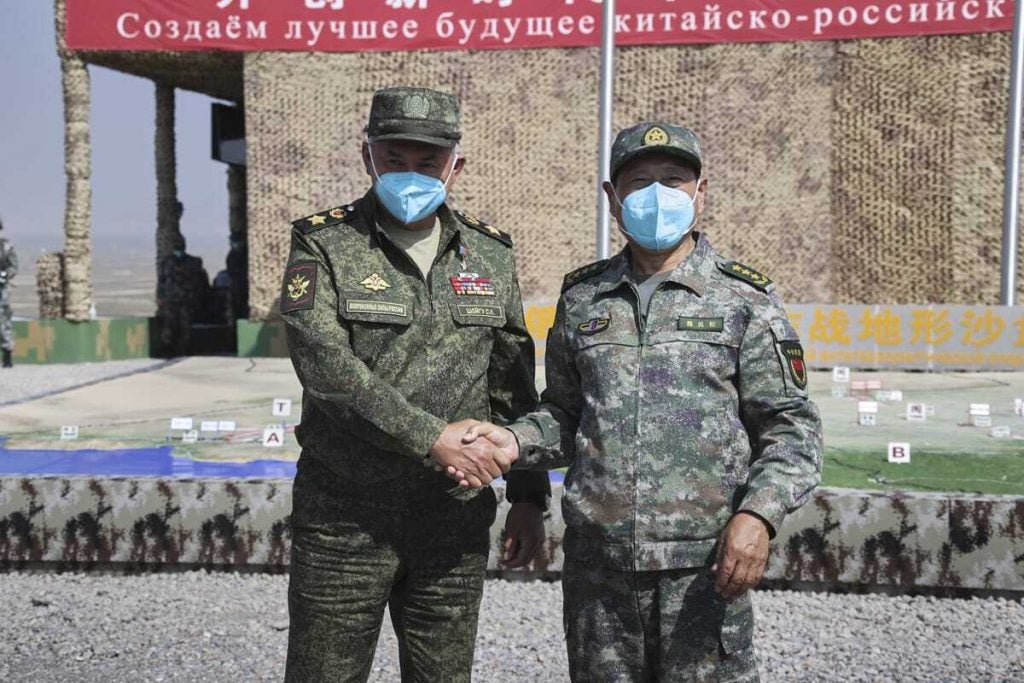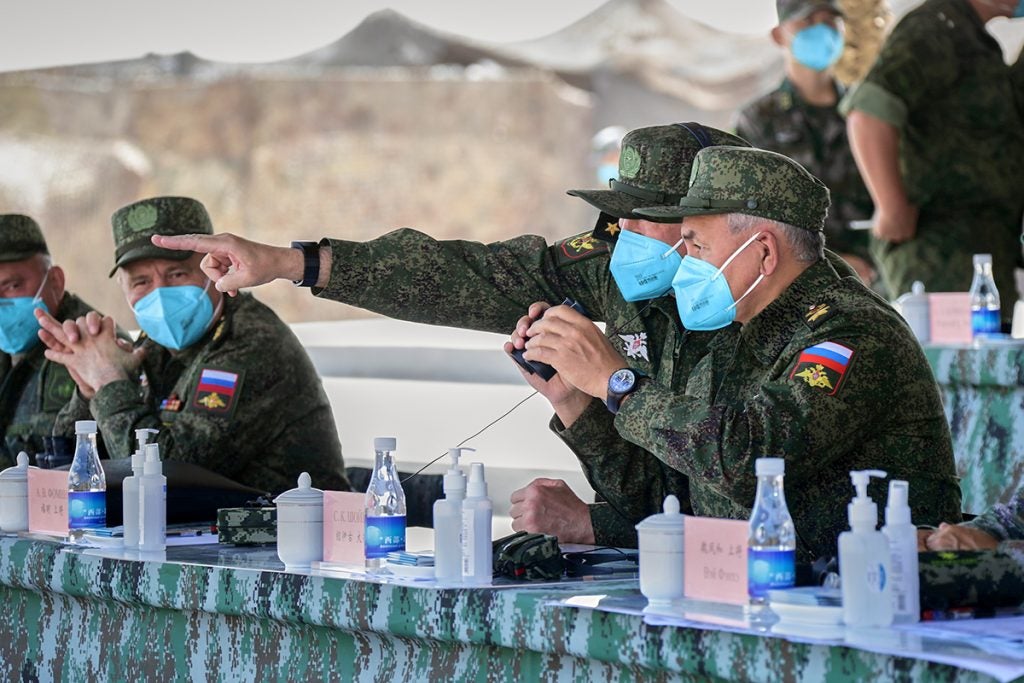Joint Russo-Chinese ZAPAD/INTERACTION-2021 Exercise Comes To An End
From 9 to 13 August, the ZAPAD/INTERACTION-2021 exercise was held at the army tactical training base in Qingtongxia City, Ningxia Hui Autonomous Region in Western China. Despite the fact that the ZAPAD/INTERACTION-2021 exercise is the first to be performed in China, it is the fourth joint Sino-Russian military exercise, following the Vostok (East) 2018, Tsentr (Center) 2019, and Kavkaz (Caucasus) 2020 exercises, which were all held in Russia.
When Russian Defense Minister Sergei Shoigu and Chinese Defense Ministry Chief Wei Fenghe met in Dushanbe in July, Shoigu accepted Wei Fenghe’s request to participate in the maneuvers in China, and the exercise became official. Days before the start of the exercise, the defense ministers issued a statement saying:
“The objectives of the exercise are to strengthen the development of Russian-Chinese relations, comprehensive partnership and strategic cooperation, increase the level of military cooperation and friendship between the armed forces of the two countries, demonstrate the determination and ability of Russia and China to fight terrorism and jointly protect peace and stability in the region.”
The soldiers participating in the exercise would test and strengthen their capabilities and skills in reconnaissance, early warning alarms, electronic attacks, and joint attack operations, according to Wu Qian, a spokesman for the Chinese Ministry of Defense. To achieve this, for the first time, a sub-command for Russian officers was established within the combined command, and the two armies were given access to a specially developed command information system. Lü Xiao, deputy commander of the PLA’s Western Joint Command, led this joint force formation. The Russian side was represented by Mikhail Nosulev, the Deputy Commander of the Air Defense Forces.

The joint exercise started out on Monday, with a ceremony to commemorate the occasion. As a result, the exercise’s active phase for soldiers from the Russian Federation’s Armed Forces and China’s People’s Liberation Army began. The total number of forces participating in the joint exercise, which began on 9 August, was more than 10,000, according to data given by the Russian Ministry of Defense. A total of 200 armored vehicles, 90 artillery pieces, and over 100 aircraft and helicopters took part in the exercise. Land Forces and Chinese National Liberation Army (PLA) Air Force troops also joined them. Su-30SM aircraft from the Eastern Military District (VVO), motorized rifle units of one of the Air Defense Defense Forces and officers of command and control elements are reported to be involved on the Russian side.

On Monday, Liu Xiaowu, the deputy commander of the PLA’s Western Theater, who is also serving as the Chinese forces’ commander, told official broadcaster CCTV that 81 percent of the weaponry deployed during the drill was “brand new.” The opening ceremony featured China’s J-11 fighters, J-16 multi-purpose aircraft, JH-7A bombers and H-6K bombers, China’s Z-10, and Russia’s MI-171 helicopters. The Chengdu J-20, also known as the Mighty Dragon, was also present in the exercise, marking the first time the PLA has dispatched the J-20 to a joint exercise with another country. In addition, joint flight training and a practice launch of a ground strike against enemy positions also took place.
Russian troops were given PLA’s Type 11 8×8 wheeled assault guns and Type 08 infantry fighting vehicles, according to news releases and exercise footage from both the Chinese and Russian sides, and it looks to be the first time that Russian troops have employed the Chinese army’s main combat equipment.
The Chinese air defense system Hongqi-17 was also active during the drill. Honggi-17 is a low-to-medium altitude, short-range surface-to-air missile system developed for the PLA that combines location, guidance, and striking capabilities, as well as the ability to capture multiple targets thanks to its advanced radar system, which can be utilized in all weather conditions.
On Friday, the last day of the drills, Russian Defense Minister Sergei Shoigu met with his Chinese counterpart Wei Fenghe at the Qintongxia training area, where the active part of the exercises took place.
Beginning around 10:20 a.m. on 13 August, with over 10,000 men from both the China and Russia, live fire exercises were carried out in four stages, including joint operations against a simulated enemy, extensive destruction of the simulated enemy’s defense system, a high-speed, three-dimensional assault, as well as extensive suppression, tracking, and elimination. General Wei Fenghe and General Sergei Shoigu gave a speech after the exercise and said:
“These drills have great significance, these are the first joint drills organized in China since the outbreak of the epidemic. And these are the first-ever Chinese operational and strategic maneuvers with the participation of Russian troops.”

Wei continued by saying “this fully demonstrates the close relationship between China and Russia, the unbreakable bond between the Chinese and Russian armed forces, and the strong and enduring friendship between us personally.” Shoigu noted that the two countries have “reached a high level of interaction of our armed forces on land, in the air, and at sea. Building it up is an important direction of further activity.”
Image: Russian Defense Minister Sergei Shoigu and Chinese Defense Minister Wei Fenghe watching the exercise / From the official Twitter account of the Russian Ministry of Defense

